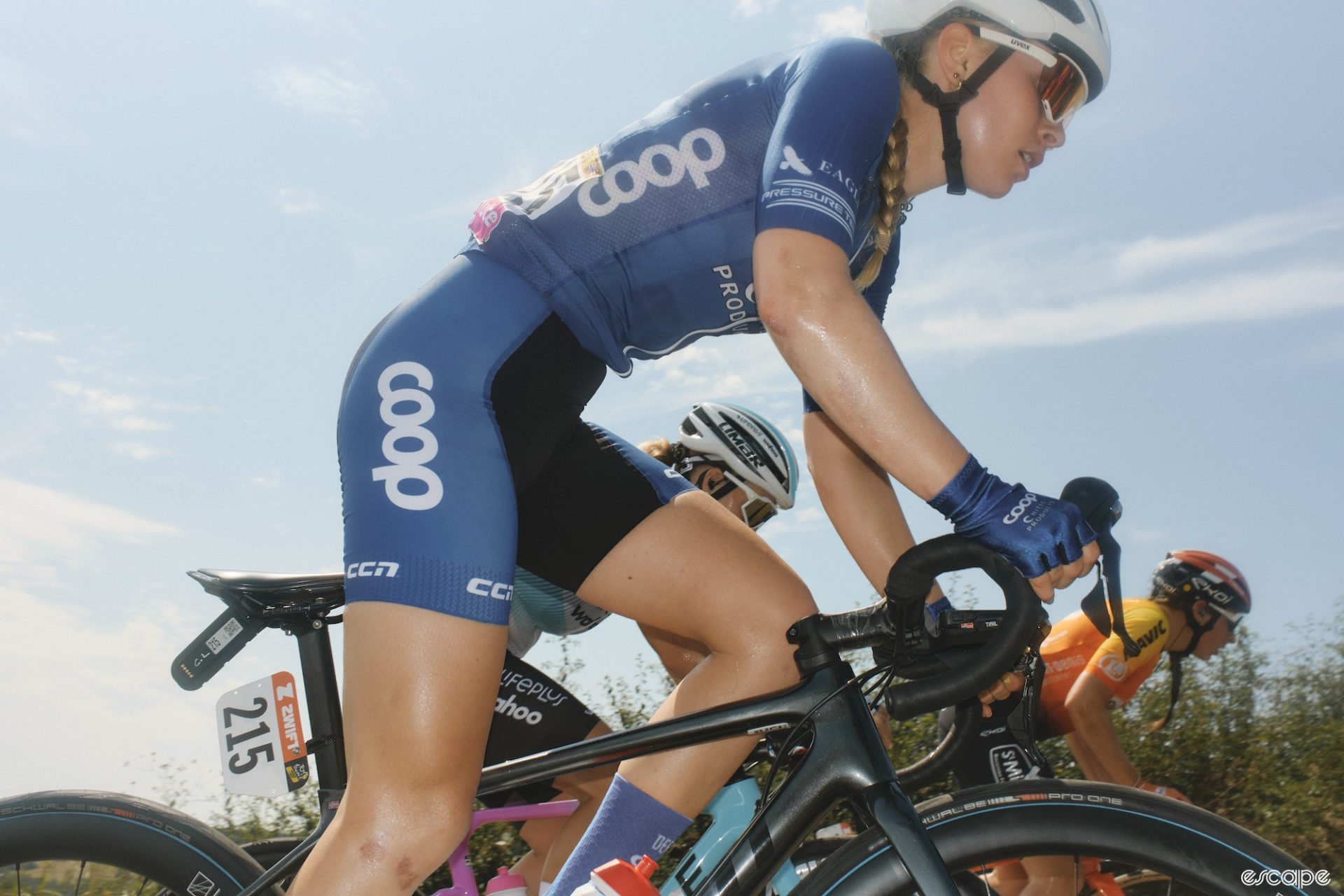In 2022, Team Coop-Hitec Products didn’t get an invite to the inaugural Tour de France Femmes avec Zwift. It was a blow to a team that has been a fixture of the women’s peloton since 2009 and helped develop riders like Elisa Longo Borghini, Chloe Hosking, Ashleigh Moolman Pasio, and Audrey Cordon-Ragot. That missed invite, and the one that did come a year later, highlights a unique challenge teams like Coop-Hitec face in the changing landscape of women’s cycling.
The UCI’s creation of a WorldTeam tier has forced some teams to make a tough choice: attempt to jump to the highest level before they are ready to ensure invites to the biggest races, or grow more slowly, but without those assured start spots. Both have their budgetary challenges, but Coop-Hitec stayed true to what they’ve always known: developing the future of the sport as a Continental-level team.
But they knew that might cost them invites to major races; even being a fixture in the women’s peloton for the last 15 years doesn’t quite cut it anymore. So when Karl Lima, Coop-Hitec’s team manager, planned the budget for the 2023 season, he didn’t factor in the massive cost of attending the top race in the world. Then the invite came.
“It was totally unexpected this year, I was really hoping to get in last year,” Lima said. “I really thought we deserved it at the time. But we didn’t. And I was pretty sure we wouldn’t get in this year. So to me, it was a surprise.” A welcome one: a Tour invite can have a major impact on a team’s future. Lima always gets an inflow of requests from young riders to join his team, but after lining up at the Tour this year, he was getting 10 CVs in his inbox a day. Not only that, but sponsors are willing to front more money if they know their products and logo will be at the Tour de France Femmes.
So the opportunity was one he and his team would never turn down, but it also came with some financial hurdles. Regardless of whether he had the money, Lima set out to race in France. What he didn’t know was that one sponsor would chip in extra to help.
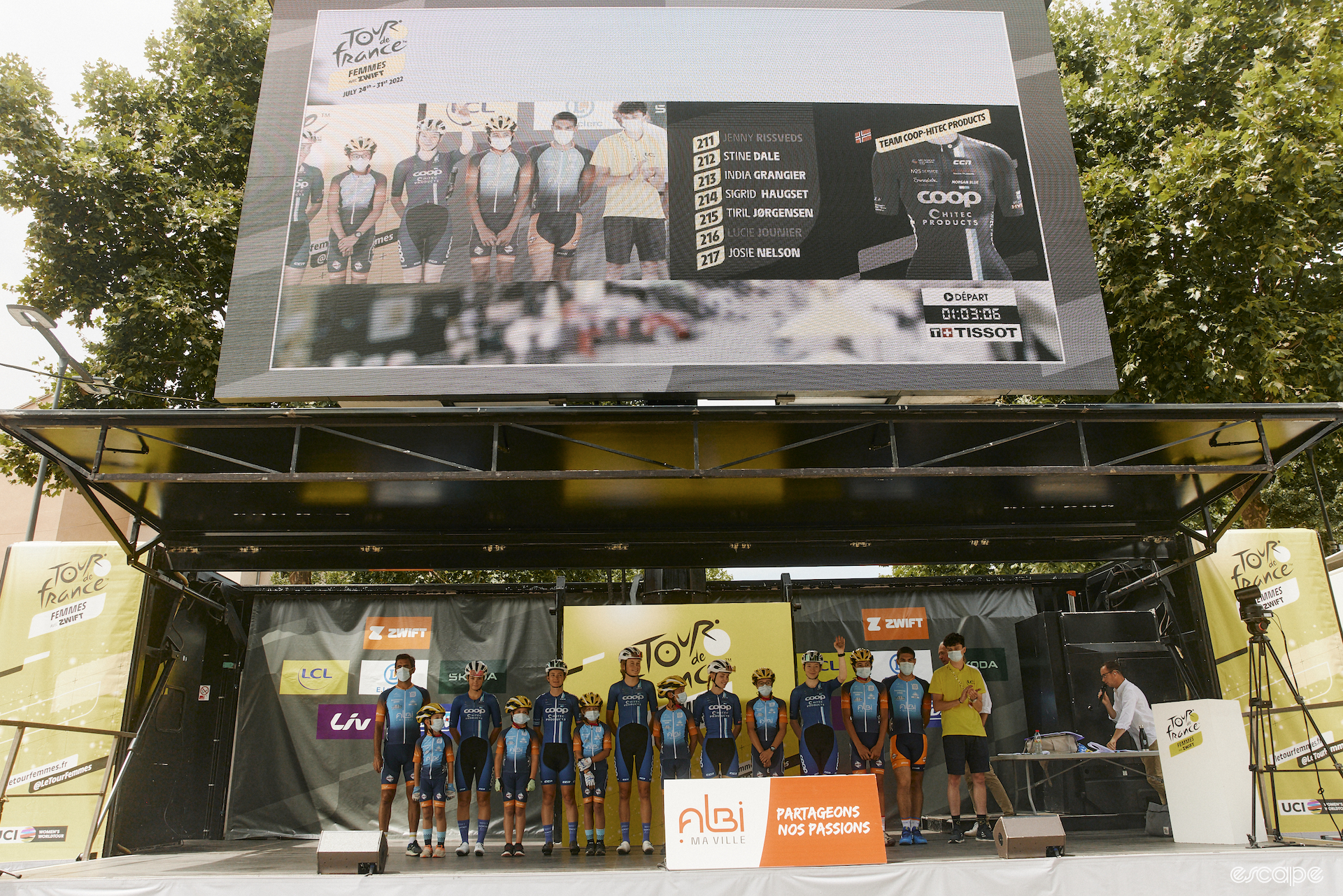
Hunting for extra cash
Hunt Wheels has backed the team since well before their riders rolled out of Clermont-Ferrand this July. The brand came on board ahead of the 2022 season because of the history of the team, and the goal they held strong to even after teams around them scrambled to adjust to the changing landscape, even if that meant abandoning developing riders to go all in for results and points.
“They kind of approached us a little bit late in the sponsorship budgeting timeline, so it was something that we had to go back and find budget for,” said Kenneth Rodriguez-Clisham, brand manager for Hunt North America.
But, he added, “The time that they’ve been in the sport, and the people that they’ve brought up and through the ranks, and that they continue to bring up and through their ranks, it was kind of a no-brainer. And it’s something that, when looking at sponsorship, we try to look at it holistically.
“Of course, it would be great to sponsor a team like SD Worx, or a team of that calibre that’s established and has the best rider of our time, but at the end of the day, if we want to grow the sport and continue to develop riders to get to that level, there needs to be support of the teams that can get them there, like Coop-Hitec.”
In fact, for a team like Coop-Hitec, “[developing riders] has become more important because before the WorldTour teams, everybody would contact us and other teams,” said Lima. “Now the best riders are not even considering Continental teams and just looking for WorldTour teams. So we are really dependent on finding the best young ones or unknown ones and developing them. But it’s hard to keep them of course.”
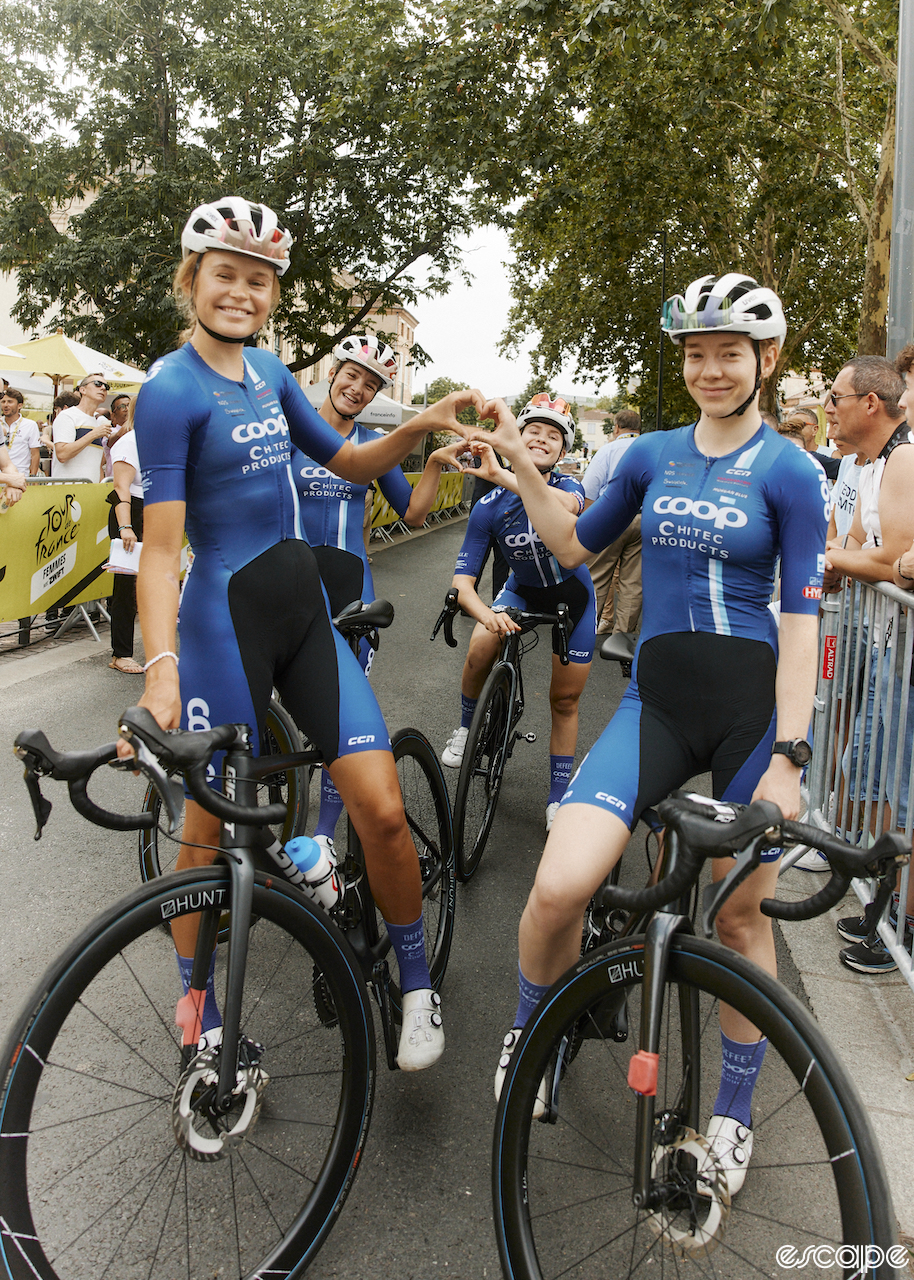
Before the WorldTeam structure took off it was either UCI teams or non-UCI teams. Every team with a UCI license was at the same level, no matter who their riders were or what the budget was. So you had top riders, or even second-tier riders, interested in every UCI team because they would all have a chance at doing the best races. With the WorldTour calendar and WorldTeams, things changed. Even developing riders only want to ride for WorldTeams, because those are the teams guaranteed entry into top races like Paris-Roubaix Femmes avec Zwift, the Tour de France, and the Flanders Classics events.
Hunt’s entry as a sponsor marked an important shift for the team. “A lot of things changed when they came in because we really lacked a wheel sponsor,” Lima explained. After the previous wheel sponsor, Fast Forward left, “There were a few years we didn’t have a wheel sponsor at all. So we just used old wheels and sometimes buy some.
“We became a whole different team on a different level when we got the Hunt Wheels correspondence. They’ve been really good and generous to us.” And little that Hunt did was more meaningful than its efforts around the team’s Tour campaign.
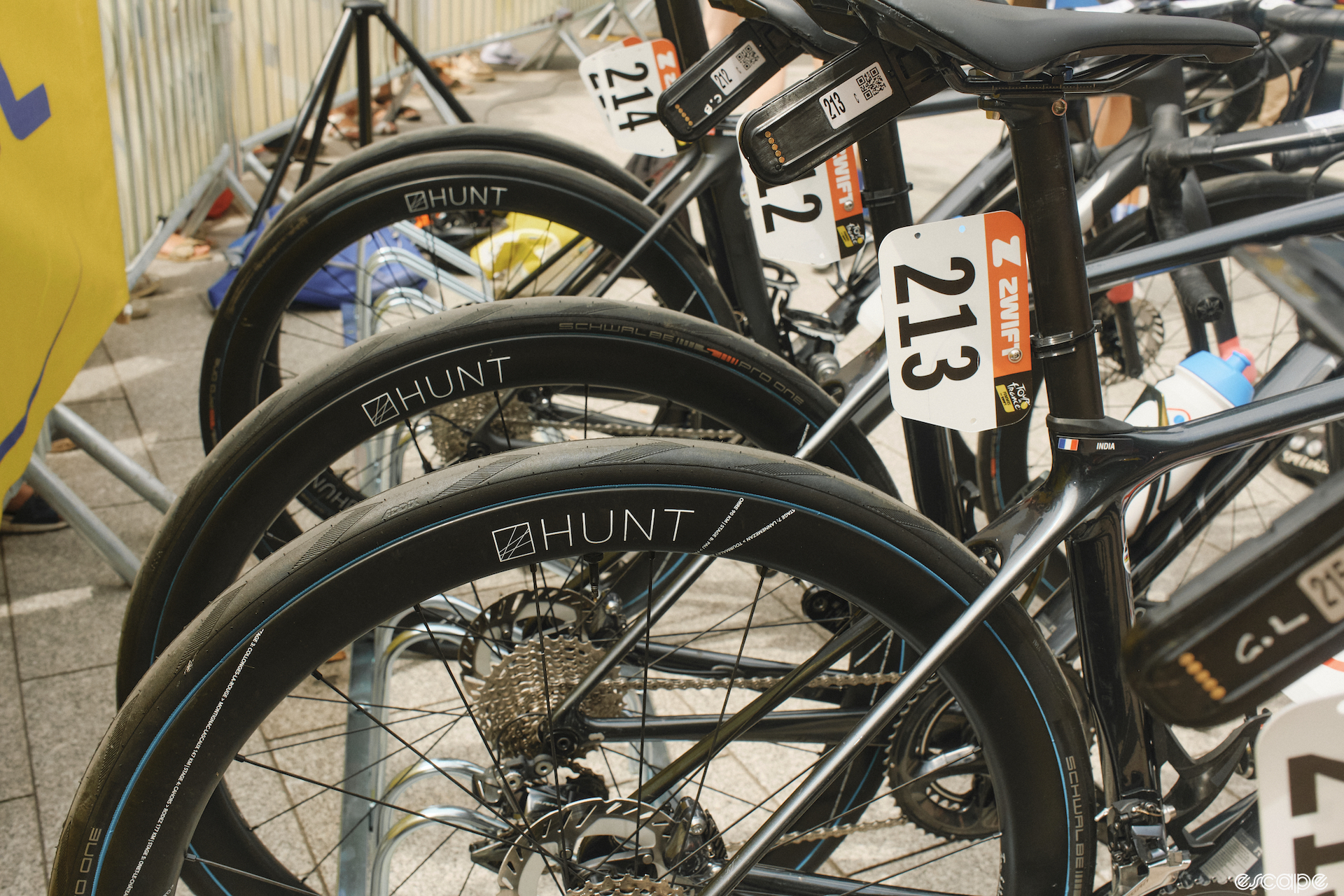
When Coop-Hitec gained entry into the Tour de France Femmes the Hunt offices were abuzz with ideas. Together with Caitlin Bower, Hunt’s merchandise planning manager, Hunt chatted with the team and decided to make a special run of wheels for the Tour.
It’s not every race that sponsors come in with special edition equipment, but it’s far from unheard of. In fact, Canyon-SRAM has long had one race per year where the team goes big with special edition kits, bikes, and even helmets. But for a smaller team, it happens far less often. And for a team that doesn’t even have sponsored time trial bikes (at the final ITT stage, a variety of brands lined the team bus), having a brand go above and beyond was quite something.
“The discussion was a bit like ‘Wouldn’t it be cool if we made something that was just for the riders?’ For example, with CeramicSpeed bearings and stuff which we don’t normally sell,” Bower explained.
From there the idea went to Hunt’s graphic design department, and apparently, he had a field day coming up with ideas to make the rim unique. “It was a very exciting run around the office day of getting everybody involved,” Bower laughed. “Everybody really enjoyed making something that was commemorating this big event for the team and giving the riders something that maybe they’ve not had before,” Bower said. Hunt made 20 sets of wheels, and on each rim were printed the start and finish towns of the stages, along with each stage’s length, in kilometres.

But it was Hunt’s plan for what to do with those wheels that had the biggest impact. To start, half of the 20 sets would go to the team at the Tour, and not just for the race. “We thought it would be just a great idea to give the team something special as like a memento to keep and then also to help give back to the team and the hard work that all of them have been doing this season,” Rodriguez-Clisham explained of the decision to let riders keep the wheels.
“It feels like we’re a part of their journey as well,” Bower said. “Giving them something when they’re sort of like at the beginning of their careers. For me doing it wasn’t necessarily about getting to see the wheels on TV, the Tour de France Femmes, I think feels like quite a groundbreaking thing that was achieved. It’s amazing to see [the wheels] there, and to be part of helping produce something that ended up there and is helping riders was really, really cool.”
“We had tried to communicate to them at the beginning and I don’t think it fully sunk in because they were just so stressed about finishing the race, getting through the super long stage,” Rodriguez-Clisham said. “It wasn’t until the last day right before the time trial when we were having them sign 10 sets that we were going to take back that they’re like, ‘Oh, what about the other 10 sets that we’ve been riding?’ and we told them they get to keep those, that those were going home with them.”
Riders get to keep helmets, kits, glasses, but when it comes to big equipment like bikes and wheels, those usually belong to the team. For the riders of Coop-Hitec Products, if they continue to race, it’s the equipment used in those early years of their career that becomes sentimental. If they decide racing isn’t for them, something like a set of wheels from their first (or only) participation in the Tour de France Femmes will go on the wall. It’s hard to overstate how big the gesture is.
But that was only half of Hunt’s contribution. After the riders signed the other 10 sets Hunt took them home and put them on their site to sell, with all proceeds going back into the team. It’s not the first time Hunt has made special edition wheels for a team they support and donated the proceeds.
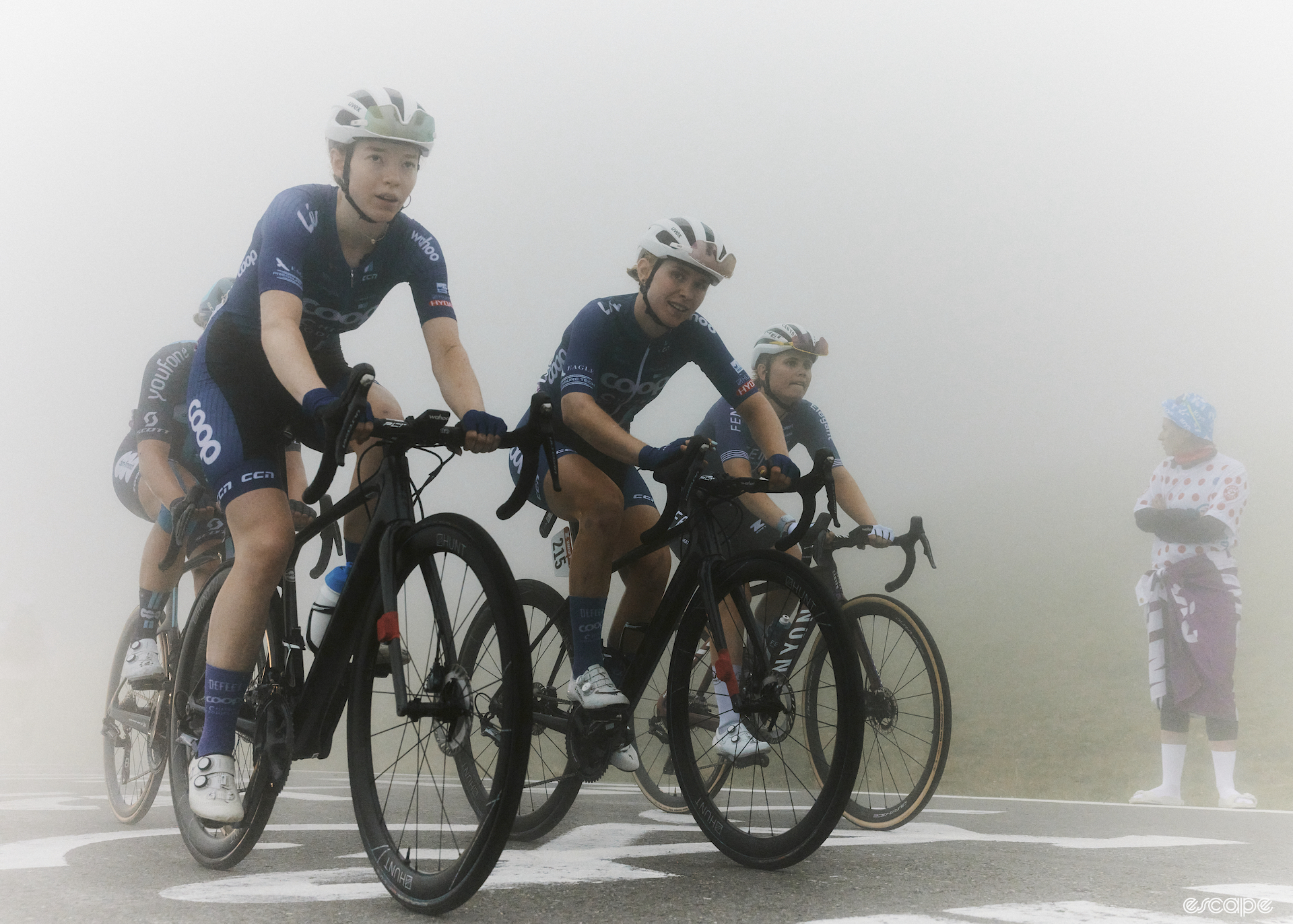
“For the last stage of the Tour de France, back in 2021, it landed on Mandela Day,” Rodriguez-Clisham said. “So we wanted to do something special for [Team Qhubeka]. We did a limited run of Qhubeka-branded wheels back in 2021 for them, and we kind of did the same thing where the proceeds of the wheels sold went to the Qhubeka Foundation to help get more people onto bikes.”
“[This time] it was kind of like, ‘Okay, this is a great idea to support the team with some limited edition product, why don’t we take it a step further and see what organizations we can give back to?’ And we thought about various organizations, but considering how hard the team had worked to get themselves to this race, we thought there was no better place to give the proceeds than back to the team as a thank-you for the hard work that they’ve been putting in.”
“This year, they kind of threw their everything at getting onto the start line of the Tour de France Femmes, and I mean, outside of being a team that really punches above its weight in terms of size and budget, they always give it their all,” Rodriguez-Clisham explained.
It might not be a ton of money in the grand scheme of a team competing almost every weekend all over Europe and trying to pay their riders so they can compete against teams paying their riders over €50,000 a year, but with the funds drained by the Tour de France Femmes, every bit of extra inflow is a big help.
“I hope it can help, yeah, because the Tour de France is an expensive race that I really didn’t think that we would get, so as a result of that in August now we have [only] the Tour of Scandinavia,” Lima explained, noting that the Tour invite forced them to choose not to attend some other races. “It’s not a secret that the Tour de France was making some big cuts into our budget.”
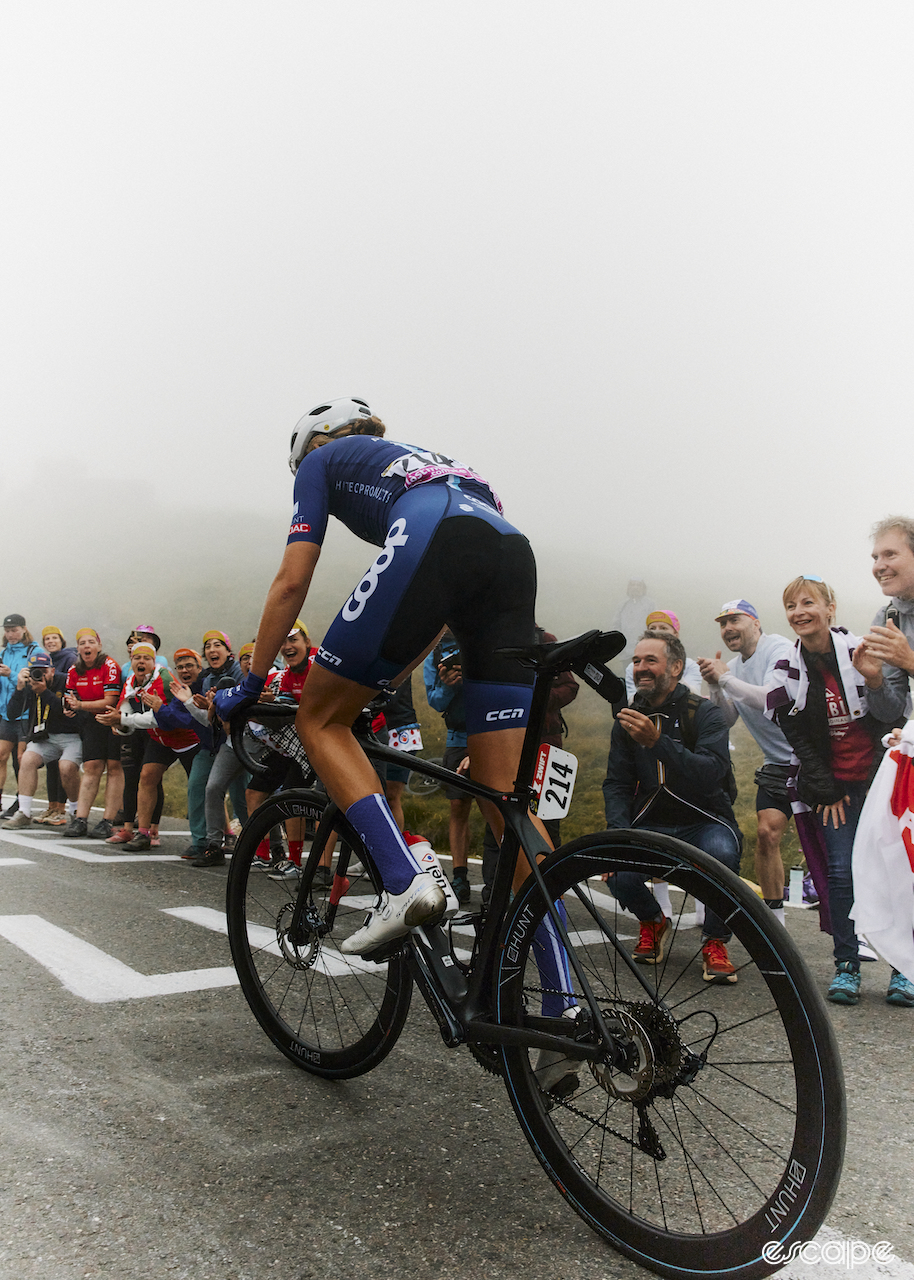
The tailwind effect
Even though Coop-Hitec didn’t win a stage at the Tour, the team’s presence got noticed by young riders. But it isn’t just CVs flooding Lima’s inbox. He’s also received requests from new potential sponsors, and current sponsors interested in further involvement. Make no mistake, the team isn’t about to have the budget of Lidl-Trek, but the gap between Coop-Hitec and the powerhouse American team is massive; considering they are competing in the same races, even a small increase can make a difference.
They can, and they have to, compete against SD Worx and Lidl-Trek, and if they want to continue at the highest level, support from brands is critical. “In the Tour de France Femmes we could really feel that the level was a bit higher,” Lima said. “The week before we competed in a [UCI] 2.1 race with seven WorldTeams, and we did really well. We [were] fourth in the GC, so we were going into Tour de France with an expectation that we would do better than we actually did.”
Fortunately for Lima, the team is about to embark on a whole new journey. Last week, the team announced it will join forces with Coop-Repsol, the men’s team, to form one outfit starting in 2024. Lima will stay on board, as will the team’s director sportif retired sprinter Tone Hatteland Lima. After partnering with the team on a multi-year deal, Hunt will also remain with the women’s team next season.
“With all the resources the other teams are getting, it’s getting harder, but it’s also good for a team like us that we can switch on and off so we have the chance to actually develop a rider and also not just leave them hanging off the back of the of the bunch without teeth,” said Lima.
As for the Tour de France Femmes? “It’s an expensive race but I wouldn’t miss it for the world.”
What did you think of this story?
